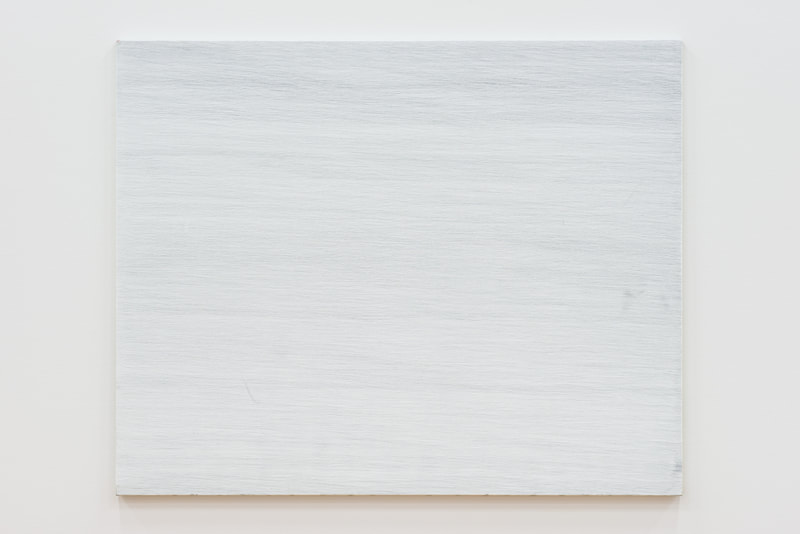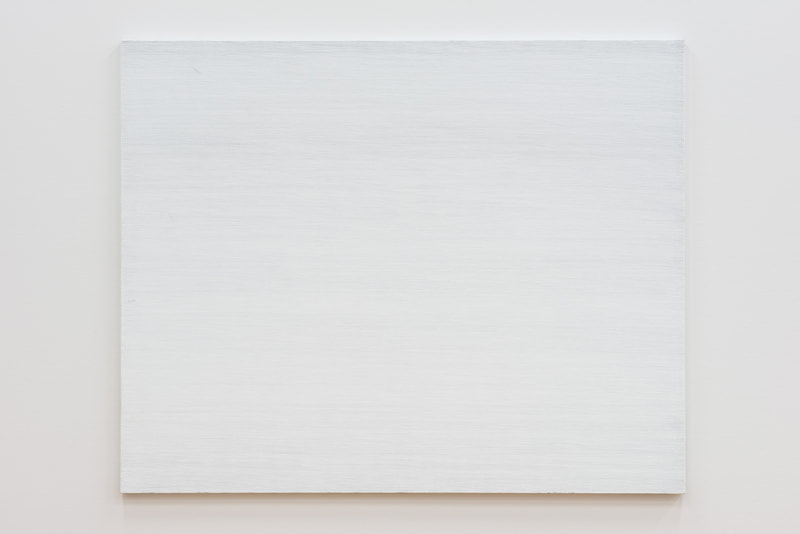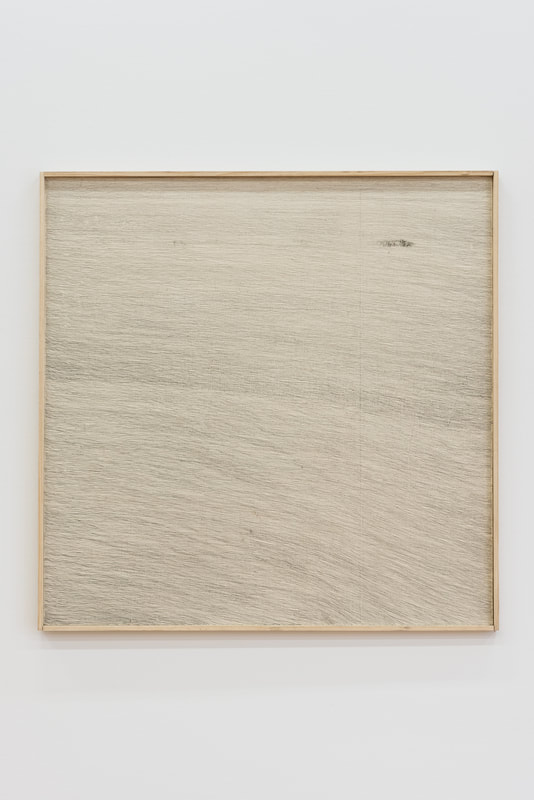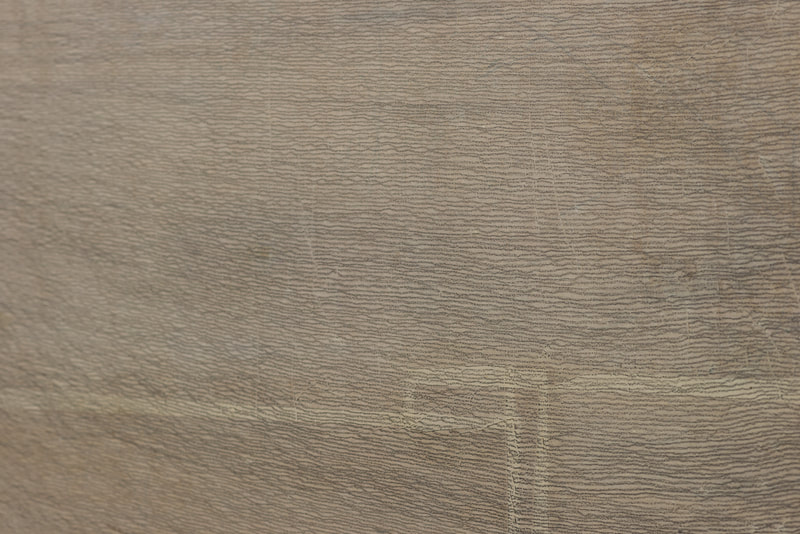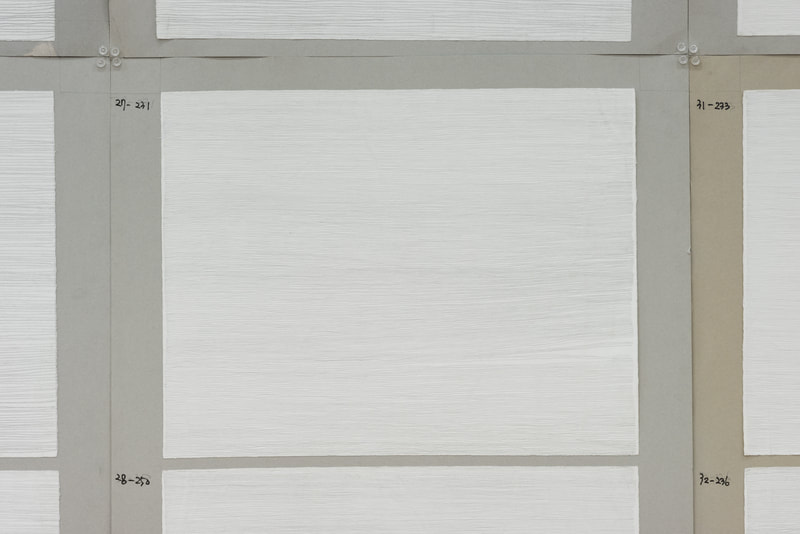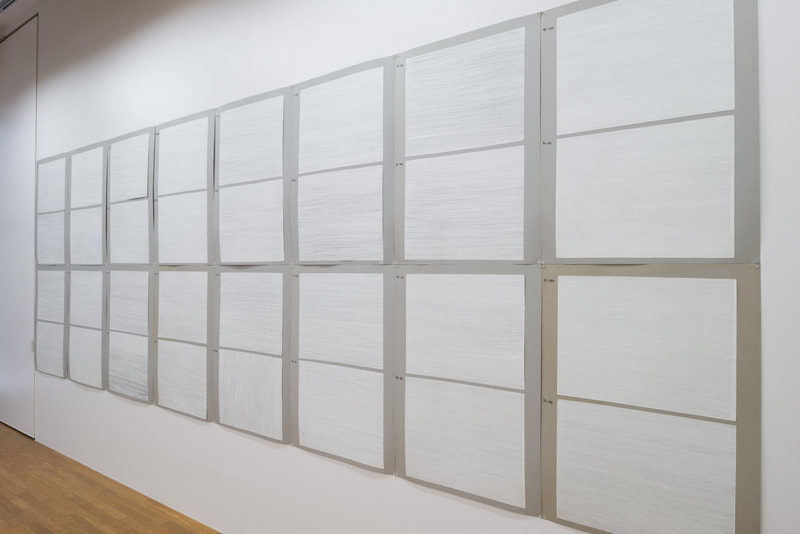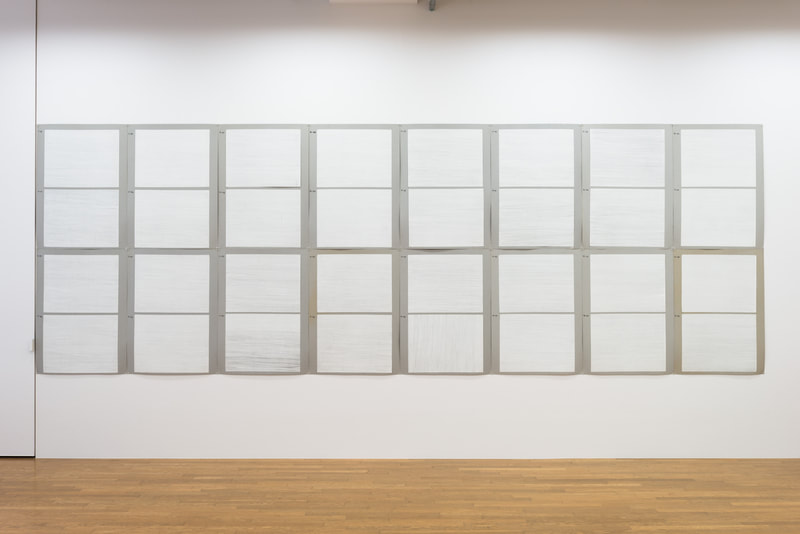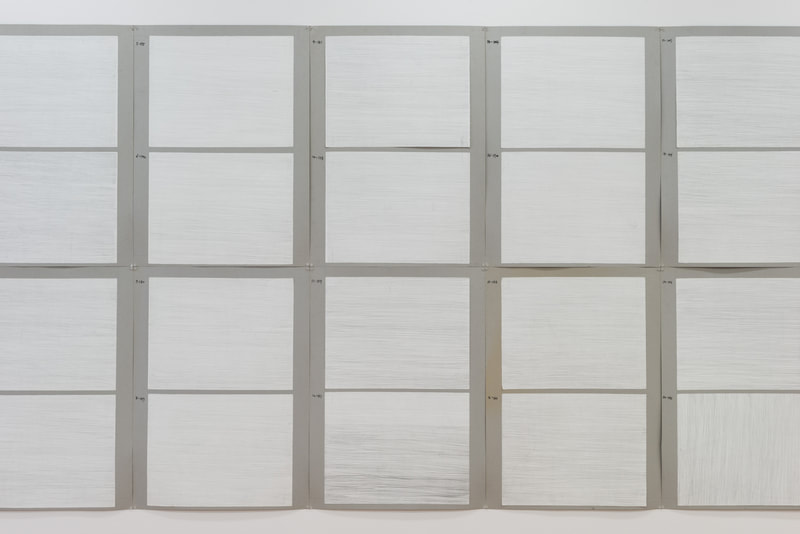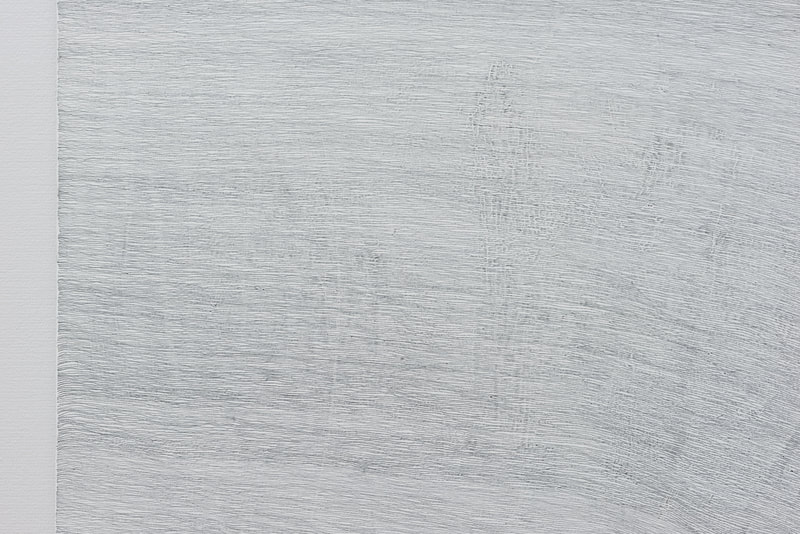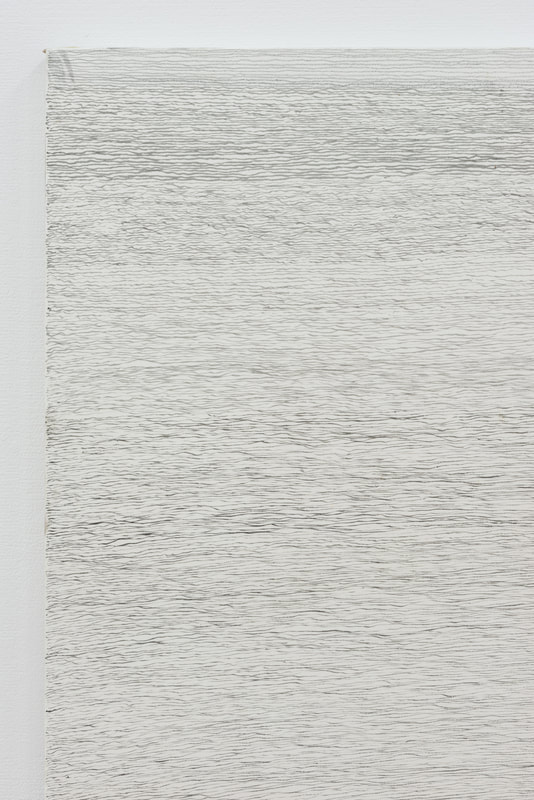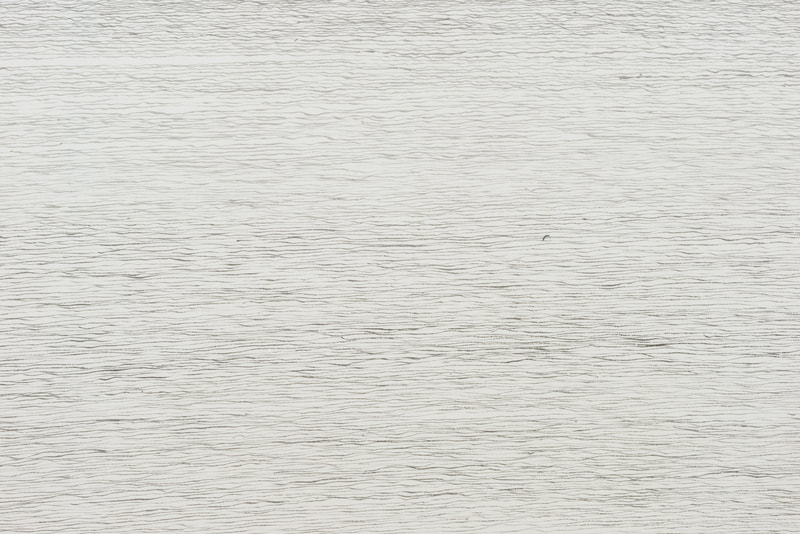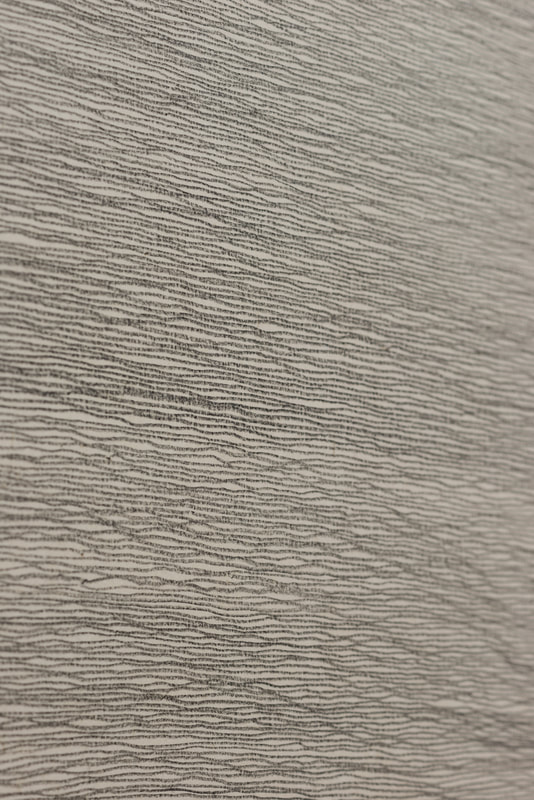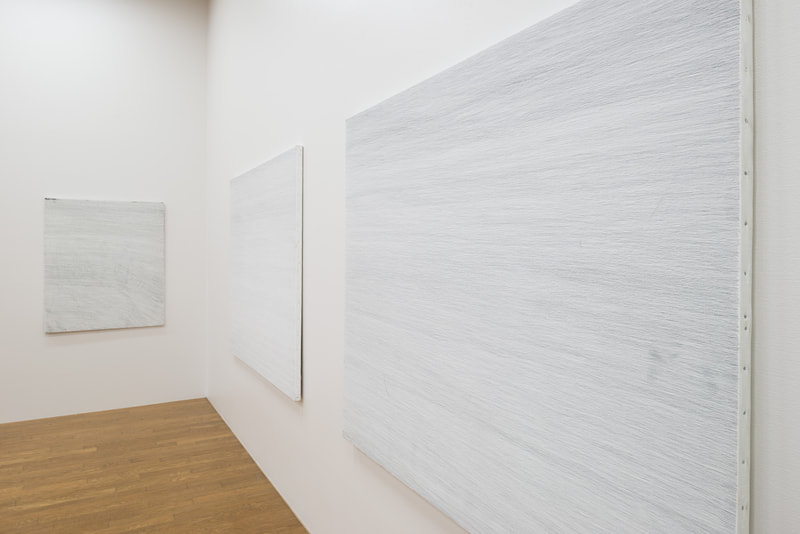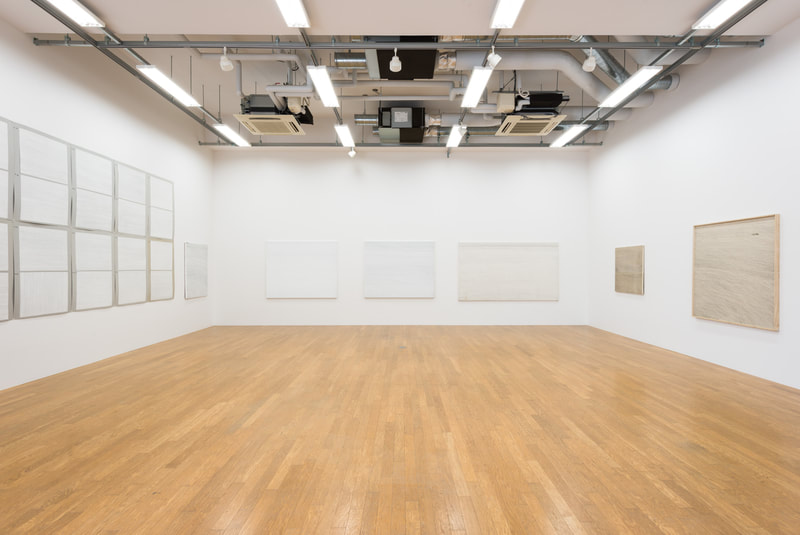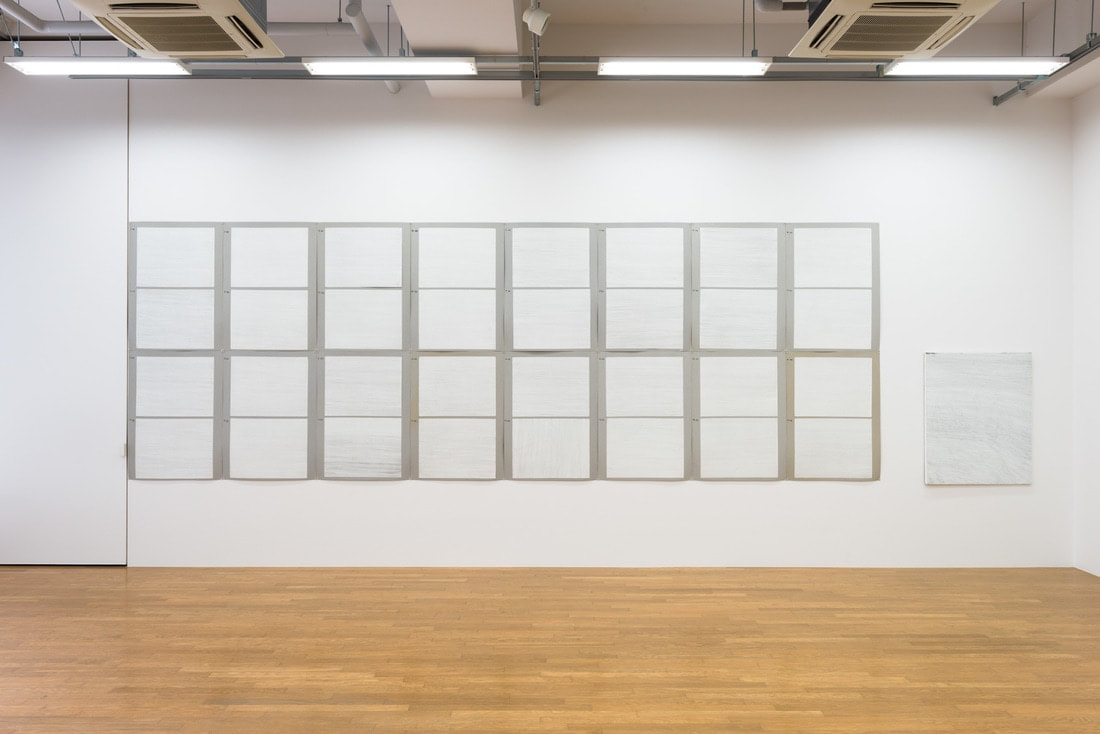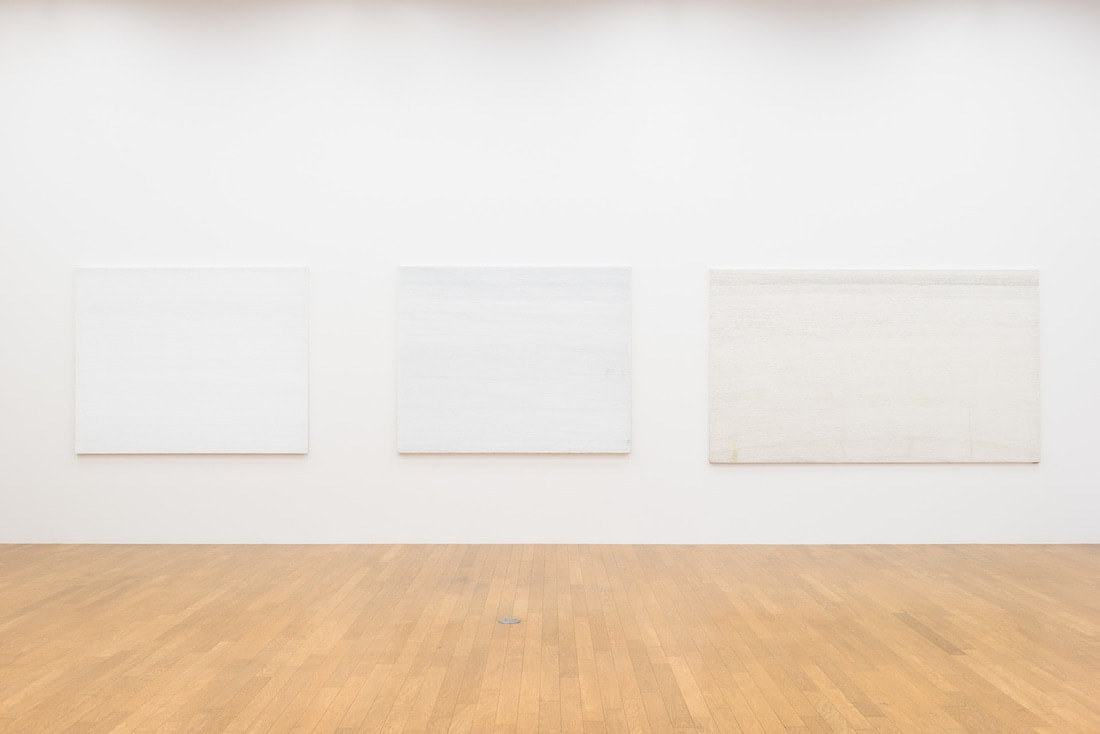painting
Line made with Self-Restraint (practicing asceticism)
I consider the relationship between the heart and forms based on Eastern Philosophy, Eastern Aesthetics, and Yanagi Muneyoshi(柳宗悦)’s Buddhist aesthetic of the “beauty of stillness.” This is done to explain the reasons why people experience beauty in things made by hand. This resulted in the realization that forms are made not only by the body but also by the heart. If art is created by a pure (natured) heart, beauty appears naturally; however, if the creator is fixated on beauty and their heart is filled with the desire to seek only beauty, beauty does not appear. I think that the distortions that arise when something is made by human hands trace the creator’s unique physical rhythms. In particular, I think that distortions that arise from a repetitive action over a prolonged period in a constrained environment, wherein a perfect shape is sought, are closer to true physical traces than distortions arising from free physical movement. These unintentional distortions express the “beauty of stillness.
” I think that the distortions that come from an undiluted unconsciousness rather than those that arise from a heart filled with desire or one that makes a distinction between beauty or ugliness are the main reasons why people perceive beauty. For four years, I have been exploring the relationship between the heart and forms by repeatedly drawing straight lines. The act of repeatedly drawing straight lines allowed me to realize the existence of pointless desires in my heart, and it was a type of training that allowed me to restrain such desires that would lead to pointless act. This was also done with the aim of allowing me to observe forms that come from consciousness and those that come from unconsciousness when creating art.
I consider the relationship between the heart and forms based on Eastern Philosophy, Eastern Aesthetics, and Yanagi Muneyoshi(柳宗悦)’s Buddhist aesthetic of the “beauty of stillness.” This is done to explain the reasons why people experience beauty in things made by hand. This resulted in the realization that forms are made not only by the body but also by the heart. If art is created by a pure (natured) heart, beauty appears naturally; however, if the creator is fixated on beauty and their heart is filled with the desire to seek only beauty, beauty does not appear. I think that the distortions that arise when something is made by human hands trace the creator’s unique physical rhythms. In particular, I think that distortions that arise from a repetitive action over a prolonged period in a constrained environment, wherein a perfect shape is sought, are closer to true physical traces than distortions arising from free physical movement. These unintentional distortions express the “beauty of stillness.
” I think that the distortions that come from an undiluted unconsciousness rather than those that arise from a heart filled with desire or one that makes a distinction between beauty or ugliness are the main reasons why people perceive beauty. For four years, I have been exploring the relationship between the heart and forms by repeatedly drawing straight lines. The act of repeatedly drawing straight lines allowed me to realize the existence of pointless desires in my heart, and it was a type of training that allowed me to restrain such desires that would lead to pointless act. This was also done with the aim of allowing me to observe forms that come from consciousness and those that come from unconsciousness when creating art.
